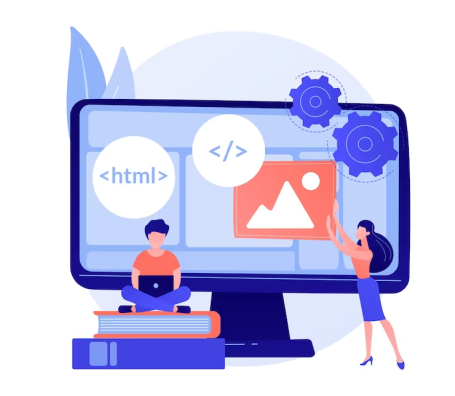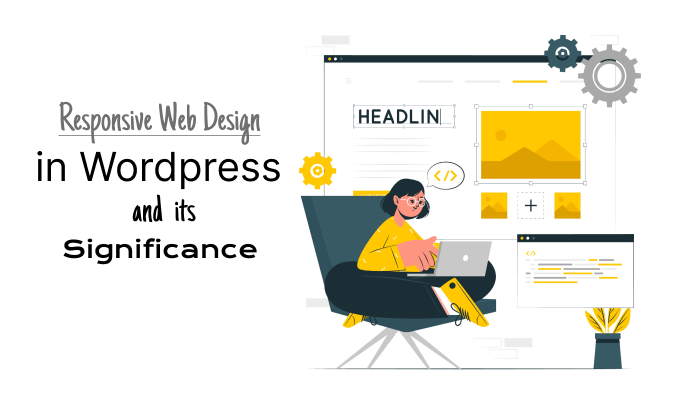
What Is SEO?
August 15, 2023
What Is WordPress Cron Jobs?
August 21, 2023The main objectives of responsive web design involve ensuring a uniform appearance on various devices. By employing responsive strategies, your site will offer an attractive visual encounter, irrespective of the device. Design uniformity fosters a sense of expertise and fosters confidence among your visitors.
In today's dynamic digital landscape, where users access websites on a myriad of devices, understanding responsive web design within the WordPress framework is paramount. This approach ensures that your site not only adapts seamlessly to different screen sizes but also delivers an exceptional user experience.
This exploration dives into the essence of responsive web design, highlighting its significance in enhancing user engagement, optimizing SEO efforts, and guaranteeing consistent presentation across diverse platforms.
What is Responsive Web Design?
Responsive web design embodies a modern approach that emphasizes the need for design and development to dynamically adjust based on the user's interactions and the context they are in. This adaptability encompasses a range of factors, including screen size, the platform being used, and even the orientation of the device.
At its core, responsive web design employs a strategic blend of flexible grids and layouts, along with carefully optimized images. These elements work in tandem to create a seamless and visually appealing experience for users, regardless of whether they are accessing the website on a large desktop monitor, a tablet held in portrait mode, or a smartphone held horizontally.

One of the key techniques that powers responsive web design is the use of CSS (Cascading Style Sheets) media queries. These queries enable the website's styles and layout to respond and adjust based on the specific characteristics of the device. By utilizing media queries, elements like font sizes, margins, padding, and even entire layout structures can be tailored to suit the user's screen.
Ultimately, responsive web design ensures that the website not only looks good but also functions effectively on a variety of devices and screen sizes. This dynamic adaptability enhances user satisfaction, improves usability, and contributes to an overall positive user experience. As the digital landscape continues to evolve, responsive web design remains a fundamental strategy for creating websites that can thrive in a diverse and ever-changing environment.
Implementing Responsive Web Design in WordPress
Responsive web design is a strategy enabling your website to adjust to varying screen dimensions and devices, like desktop computers, tablets, and mobile phones. This technique enhances user satisfaction, accessibility, and website efficiency, while also potentially boosting SEO and conversion rates. Yet, the question remains: How can you integrate responsive web design into platforms like WordPress or other content management systems?

1. Choose a Responsive Theme
Start your RWD journey by selecting a WordPress theme that is inherently responsive. Numerous themes are designed with built-in responsiveness, saving you time and effort in adapting your site. Make sure to evaluate themes with fluid layouts and media queries that enable smooth transitions across devices.
2. Utilize CSS Media Queries
Leverage CSS media queries to define specific styles for various screen widths. By tailoring your website's appearance based on the device's characteristics, you can ensure content readability and proper layout alignment. This approach involves setting breakpoints and adjusting design elements accordingly.
3. Mobile-First Design Approach
Embrace the mobile-first philosophy, focusing on optimizing your website for mobile devices initially, then progressively enhancing it for larger screens. This strategy ensures that the core functionality and content are preserved across all devices, promoting a consistent user experience.
4. Responsive Images and Media
Optimize images and multimedia content for responsiveness. Utilize techniques like responsive images, where different image sizes are served based on the user's device, enhancing loading times and preserving visual quality. WordPress plugins can simplify this process by automating image resizing and delivery.
5. Testing and Debugging
Thoroughly test your responsive design across various devices, browsers, and orientations. Tools like browser developer tools and online emulators can aid in identifying and rectifying layout issues. Regular testing guarantees that your website maintains its intended functionality and appearance on different platforms.
6. WordPress Plugins and Tools
Leverage specialized WordPress plugins and tools dedicated to responsive design. These resources can streamline tasks like CSS optimization, viewport management, and mobile-specific functionalities. Popular plugins like "WPtouch" can create mobile-friendly versions of your website.
7. Content Adaptation
Tailor your content to suit different screen sizes. Prioritize essential information, maintain concise text, and reorganize elements if necessary. This ensures that users receive a seamless experience regardless of the device they are using.
8. Regular Updates and Maintenance
Keep your WordPress core, theme, and plugins updated to ensure compatibility with evolving technologies and devices. Regular maintenance safeguards your responsive design's effectiveness and longevity.
By following these steps, you can successfully implement responsive web design within the WordPress ecosystem. This strategic approach will enable your website to cater to the diverse needs of users across a wide range of devices, fostering a positive user experience and driving engagement.
Benefits of Responsive Web Design for WordPress
Responsive web design (RWD) offers significant advantages for WordPress websites:

RWD ensures consistent and accessible experiences across various devices, eliminating the need for manual adjustments. Mobile users benefit from optimized layouts, faster load times, and improved navigation. This positive experience reduces bounce rates and fosters brand trust.
B. Improved SEO and Search Rankings
Google prioritizes mobile-friendly sites in search rankings, making RWD essential for better visibility. Positive mobile experiences lead to lower bounce rates and higher user engagement, indirectly boosting SEO efforts.
C. Cost-Efficiency and Simplified Maintenance
RWD eliminates the need for multiple versions of a website, reducing development and maintenance costs. Changes and updates can be applied universally, streamlining management and minimizing expenses.
D. Increased User Engagement and Reduced Bounce Rates
RWD's user-friendly design leads to smoother interactions, faster load times, and overall improved engagement. Visitors are more likely to explore content and stay longer, resulting in lower bounce rates.
E. Future-Proof Adaptability
Responsive design ensures readiness for evolving devices and technologies. Your WordPress site remains accessible and functional, accommodating new trends without requiring frequent redesigns.
Overall, RWD for WordPress enhances user experiences, supports SEO goals, reduces costs, boosts engagement, and prepares your site for the future.
If you found this article helpful, we invite you to subscribe to our YouTube Channel for more WordPress video tutorials. You can also connect with us on Facebook for additional updates and content.





